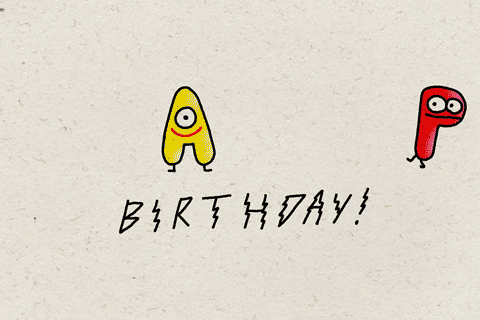Sinh nhật là một dịp quan trọng, đánh dấu sự ra đời của một ai đó trên cõi đời này. Vào ngày này bên cạnh những món quà, bó hoa hay lời chúc ý nghĩa đến từ người thân hay bạn bè thì bạn cũng có thể gửi họ những bức hình động vô cùng ý nghĩa trong ngày sinh nhật này, thông qua các mạng xã hội như Facebook, Zalo, Viber.... Những hình ảnh động sinh nhật hiện nay khá phát triển và phong phú để bạn có nhiều sự lựa chọn khác nhau.
Để có được những hình ảnh chúc mừng sinh nhật độc đáo các bạn cũng cần lựa chọn kỹ lưỡng cũng như tìm những hình ảnh động phù hợp với mọi yêu cầu của mình. Đặc biệt đối với những hình ảnh động chúc sinh nhật sẽ tạo cho người nhận cảm thấy hứng khởi hơn bởi hình ảnh chuyển động cũng như thể hiện được ý nghĩa và tình cảm của người gửi trong bức ảnh. Các bạn hãy cùng tìm hiểu chi tiết một số bức hình ảnh động chúc sinh nhật dưới đây.
Một lời chúc sinh nhật cùng những màn pháo bông cũng đủ khiến người nhận cảm thấy hạnh phúc.

Hình ảnh những ngọn nến chính là thứ tượng trưng cho ngày sinh nhật, với bấy nhiêu ngọn nến sẽ là số tuổi của người đó.

Hình ảnh ngộ nghĩnh với những từ Happy ghép lại. Hình ảnh này màng ý nghĩa rằng chủ nhân buổi sinh nhật luôn vui vẻ và hạnh phúc.

Một chiếc bánh sinh nhật biết hát cùng những lời chúc và bóng bay.

Một lời chúc mừng sinh nhật ý nghĩa đến từ đội quân minions siêu đáng yêu.

Pháo bông đang nổ, hãy cùng cầu nguyện nào.

Hình ảnh chúc mừng sinh nhật hài hước với điệu nhảy nhí nhảnh.

Nến chúc mừng sinh nhật ghép thành chữ Happy Birthday.

Với những ai thích mèo thì đây sẽ là hình ảnh đáng yêu đối vời họ.

Một chiếc bánh sinh nhật biết nhảy múa sẽ khiến người nhận cảm thấy vui vẻ.

Chiếc bánh sinh nhật nhiều màu sắc sẽ là hình ảnh đáng yêu cho ai nhận được.

Bạn thấy chiếc bánh này thế nào? Rất giống chiếc bánh sinh nhật thật đúng không?

Sinh nhật tất nhiên không thể thiếu những món quà, với một núi quà như thế này thì chắc hẳn ai cũng sẽ thấy thích thú lắm đấy.

Một hình ảnh đơn giản, nhưng chứa đựng trong đấy rất nhiều tình cảm của người gửi.

Hình ảnh động chúc mừng sinh nhật dễ thương.

Mỗi quả cầu là mỗi lời cầu nguyện trong ngày sinh nhật thêm ý nghĩa.

Bánh sinh nhật, nến, lời chúc như vậy là đủ cho một sinh nhật ý nghĩa phải không?

Gấu bông và bánh sinh nhật sẽ là những thứ không thể thiếu cho đêm sinh nhật.


Hình ảnh sinh nhật dễ thương dành cho các bạn nhỏ.

Thêm những ảnh động chúc mừng sinh nhật vui nhộn khác nữa bạn nhá:















Hy vọng với những ảnh động đẹp, độc để chúc mừng sinh nhật này bạn sẽ có thêm những cách để chúc mừng sinh nhật bạn bè, người thân vui vẻ hơn. Hãy lưu bookmark trang này để cập nhật thêm những hình ảnh mới mà mình thêm vào thường xuyên nha.
Xem thêm:
- Tặng quà gì cho người yêu vào dịp sinh nhật?
- Những lời chúc sinh nhật lãng mạn cho người yêu
- Những món quà sinh nhật ý nghĩa dành tặng bạn bè chưa đến 100k
- Tuyệt chiêu tặng quà sinh nhật cho bạn trai mới quen tạo ấn tượng khó quên
- 7+ Món quà sinh nhật ý nghĩa tặng bạn gái là dân công nghệ
